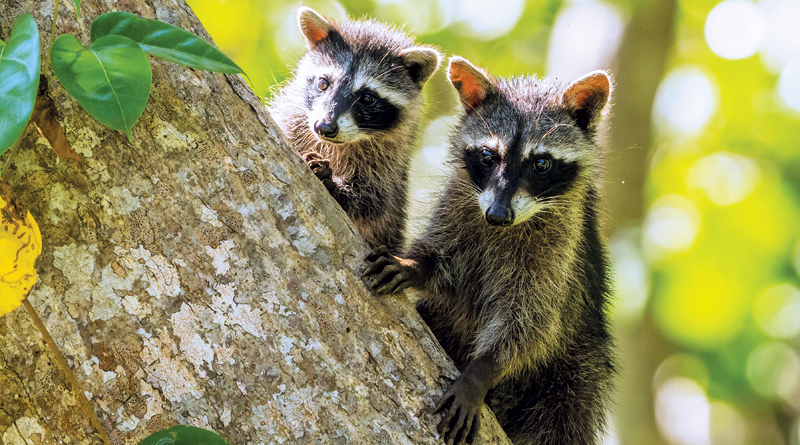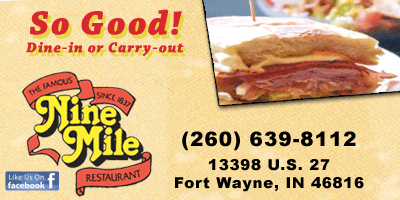MASKED VISITOR AT THE BIRD FEEDER – Life In The Outdoors

It was late evening, after dark, and I was going to bed. But, before going to bed I decided to get a drink from the kitchen. Going through the dining room on the way to the kitchen I turned the dining room light on and looked at the bird feeders outside the window. There, on the platform bird feeder, was a raccoon!
Raccoons are nocturnal, animals of the night. This wasn’t the first time I’d seen a raccoon on that feeder. I stepped to the window, the raccoon looked up, saw me, dropped off the feeder and hurried across the yard. The last I saw of the raccoon it was going under the fence and out of our yard.
Raccoons are well known but I seldom see one, except, sadly, dead along a highway. They’re the animals that have masks, black bands across the eyes, and black rings around their bushy tails.
Raccoons are also widely distributed. I’ve seen them in several states, in Iowa where I grew up, in New York where I lived before moving to Indiana, and in Indiana since I moved here. I also saw them occasionally in other states when I was traveling.
Before I retired, my family and I took vacation trips every year, traveling with a van and a tent. We stayed in campgrounds and it wasn’t unusual to see a raccoon digging in the garbage at the campground. After the kids were grown and left home and I retired, my wife and I bought a motorhome and traveled all over the U.S., often staying at campgrounds and often seeing raccoons. I don’t remember precisely but I may have seen a raccoon in every other state of the U.S., except Alaska and Hawaii. There are no raccoons in Alaska and Hawaii.
An adult raccoon is a medium sized animal, fifteen to twenty-five pounds, occasionally more, as much as thirty-five pounds, according to the reference books I have. They’re solitary animals, loners, except females with their young and groups in sheltered places in winter sometimes.
Males and females get together to mate but they don’t live together. After mating the male departs leaving the female to bear, feed and raise the young.
Coons, as they are frequently called, often hunt and feed along streams and rivers and around lakes and marshes where they are seen wading and holding bits of food over the water. From this it is often said, and written, that coons wash their food before eating it. This is as false as saying that owls are wise and that bats are blind. They get a lot of their food from water; frogs, toads, crayfish, small fish, and they frequently dunk their food in water, but they don’t rub their food with water or do anything that can be considered washing.
I didn’t know coons ate bird seed, until I started seeing a coon now and then on one of our bird feeders. But, they eat almost anything else. In addition to the things they get from water, and bird seed, they eat fruit, nuts, insects, bird eggs and nestlings. They eat chicken eggs and a coon in a hen house is a disaster. They eat grain and are especially fond of corn in the milk stage, just days before it’s ripe enough for us to pick the ears.
During the day and on days when the weather is foul, coons hole up, literally. They take shelter in hollows in trees, in hollow logs, in crevices in between rocks, in burrows in the ground and in sheltered accessible places in buildings. Usually they den up singly though a mother coon may den up with her young and occasionally several adults will hole up together. I read of thirty-five coons once found together in an attic.
Interesting animals, those hairy, masked, ring tailed beasts.
- Birds As Weather Forecasters – Life In The Outdoors - December 17, 2021
- Rare Bird Spotted In Indiana – Life In The Outdoors - October 8, 2021
- MY EXPERIENCE WITH DEER – Life In The Outdoors - July 30, 2021


